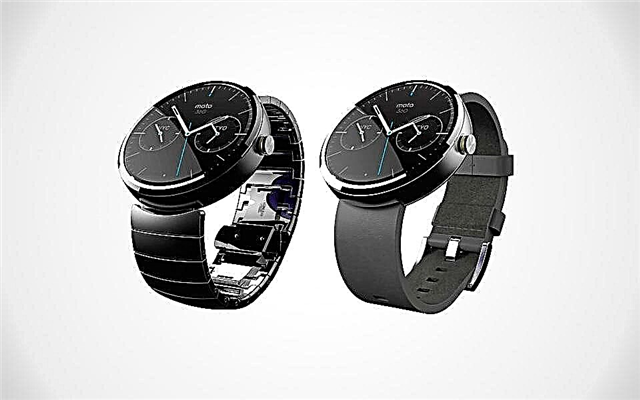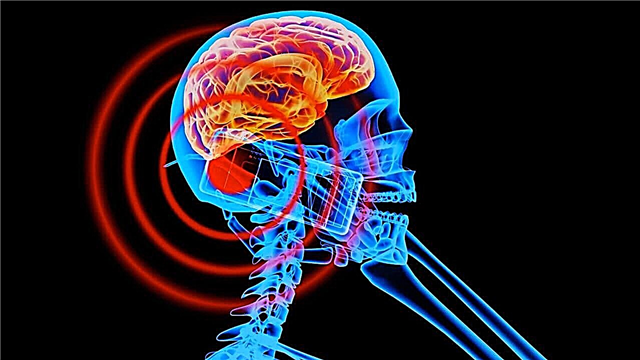2017 was a successful year for photography enthusiasts - several new smartphones were released to the market, the developers of which promised us the best performance cameras. The quality of the photographs, according to them, is capable of surpassing the achievements of all devices of previous generations. Have companies been able to achieve their goals? We will talk about this in the ranking of smartphone cameras in 2017, based on data from the DxOMark website.

10. Samsung Galaxy S6 Edge Plus
DxOMark Mobile Rating: 87
 Opens the 2017 DxOMark smartphone camera rating for Samsung Galaxy S6 Edge Plus. Despite the year of release, it is one of the best camera phones on the market.
Opens the 2017 DxOMark smartphone camera rating for Samsung Galaxy S6 Edge Plus. Despite the year of release, it is one of the best camera phones on the market.
A camera with a resolution of 16 megapixels is perfect for those who like to shoot on the go, and for perfectionists who want to squeeze the maximum out of the device even in the most adverse conditions. Its most important benefits include:
- Quick start with two presses of a button under the screen. The function works even when the smartphone is locked.
- Simple and intuitive controls. For example, icons of frequently used functions are displayed in a separate line, which can be hidden if necessary.
- The ability to take clear pictures in poor lighting conditions due to the increased aperture size f1.9, Intelligent Optical Image Stabilization and a combination of software and hardware image processing.
9. OnePlus 5
DxOMark Mobile Rating: 87
 A hot novelty of this summer, OnePlus 5 confidently entered the top 10 smartphones with the best camera in 2017. The smartphone has not one, but two cameras - one with 16 megapixels and an aperture of f / 1.7 and an additional sensor of 20 megapixels with aperture of f / 2.6.
A hot novelty of this summer, OnePlus 5 confidently entered the top 10 smartphones with the best camera in 2017. The smartphone has not one, but two cameras - one with 16 megapixels and an aperture of f / 1.7 and an additional sensor of 20 megapixels with aperture of f / 2.6.
Advantages:
- The photos taken by the OnePlus 5 feature excellent white balance in various lighting conditions.
- Pleasant colors and high detail safety even in bright conditions.
- Experts who tested this camera phone also note very stable autofocus in both manual and automatic modes.
True, it was not without drawbacks either - in low light the quality of the photo may be slightly worse (color changes, especially at the edges of the picture). OnePlus 5 also has difficulty transmitting small textural patterns in the picture.
8. Motorola Moto Z Force Droid
DxOMark Mobile Rating: 87
 Last year's new Motorola Moto Z Force Droid is not losing ground. If the front camera has a resolution of only 5 megapixels, then the main one has 21 megapixels (f / 1.8).
Last year's new Motorola Moto Z Force Droid is not losing ground. If the front camera has a resolution of only 5 megapixels, then the main one has 21 megapixels (f / 1.8).
Benefits:
- Photos are distinguished by low noise, high detail and natural colors.
- There is a laser and phase autofocus.
- The camera can read barcodes.
- Correct exposure (although there are exceptions).
Of the flaws, one can note only the difficulty with detail in bright light and problems with white balance in low light conditions.
7. Huawei P10
DxOMark Mobile Rating: 87
 Collaboration with the German photo lab Leica Camera AG has benefited the Chinese smartphone. It is equipped with a dual camera, which has a 20MP monochrome sensor and 12MP color sensor, f / 2.2 lenses. Together with software, such a camera can provide almost unlimited possibilities in the field of photographic creation.
Collaboration with the German photo lab Leica Camera AG has benefited the Chinese smartphone. It is equipped with a dual camera, which has a 20MP monochrome sensor and 12MP color sensor, f / 2.2 lenses. Together with software, such a camera can provide almost unlimited possibilities in the field of photographic creation.
Strengths:
- Both cameras are anti-reflective.
- Shooting in the open air and indoors in the light and in the dark are highly detailed and accurate color reproduction.
- There is a background blur effect (“bokeh”) and an HDR function for combining the best elements of different photos into one.
- You can manually adjust various settings, including white balance and ISO and exposure.
Cons: sometimes cameras may argue among themselves - on some color shots taken with a resolution of 20 megapixels (if the monochrome matrix is responsible for detail, then color information is read from the second photosensor), there may be a slight color distortion.
6. Sony Xperia X Performance
DxOMark Mobile Rating: 88
 This inexpensive smartphone has one of the best selfie cameras at the moment - the front camera is equipped with a 13 megapixel sensor and aperture f / 2.0.
This inexpensive smartphone has one of the best selfie cameras at the moment - the front camera is equipped with a 13 megapixel sensor and aperture f / 2.0.
And the photos taken with the main camera of 23 megapixels with aperture of f / 2.0 are distinguished by excellent sharpness, excellent color reproduction and attention to detail (the camera succeeds in smoothly reducing the level of sharpness when shooting long-range shots).
The camera phone has a number of disadvantages:
- In macro photography, angular detailing suffers, but this is a common disease of almost all smartphone cameras.
- The smartphone manufacturer said that the device has a proactive (predictive) focus mode. However, in practice, this is nothing more than a clever marketing ploy. Although the camera hovers in 0.03 seconds, the user will not notice the difference, even if the guidance takes 0.1 seconds.
- The Xperia X Performance does not have a 4K mode, although videos recorded at Full HD at 60 fps are excellent.
5. Samsung Galaxy S7 Edge
DxOMark Mobile Rating: 88
 Although the camera in tenth place in the ranking of the best cameras in the smartphone of 2017 was completely successful, the Korean company decided not to stop there. A completely new model has been installed in the Samsung Galaxy S7 Edge.
Although the camera in tenth place in the ranking of the best cameras in the smartphone of 2017 was completely successful, the Korean company decided not to stop there. A completely new model has been installed in the Samsung Galaxy S7 Edge.
- Although the resolution of the new camera is 4 megapixels lower than that of the S6, however, an increased aperture to f / 1.7 aperture ratio can produce magnificent photos even at night.
- The pixel size is increased to 1.4 microns, so you can get more information on the matrix.
- Now the video can be shot in slow motion and a time lapse mode has appeared.
- And in this model there is a “Food” mode, which allows you to configure the subject, leaving everything else in a blurry state, and adjust the temperature of the colors to make the shade colder or warmer. A find for those who post on social networks photos eaten and drunk.
Only a single LED flash spoils the picture.
4. Samsung Galaxy S8
DxOMark Mobile Rating: 88
 In general, the Samsung Galaxy S8 camera worthily continues the tradition of the company's smartphones - in some aspects, it can worthily compete with the first place in the rating.
In general, the Samsung Galaxy S8 camera worthily continues the tradition of the company's smartphones - in some aspects, it can worthily compete with the first place in the rating.
- The main camera sensor with a resolution of 12 megapixels and a lens with an aperture of f / 1.7 are capable of delivering the highest quality photos and excellent video.
- The front camera resolution is 8 megapixels, and the aperture is f / 1.7. And this means that selfies and conference calls will be at the highest level, that day, that at dusk.
- The camera phone features Dual Pixel technology for perfectly fast and accurate autofocus, even with sharp movements and in a dark room.
- Multi-frame shooting allows you to combine several photos into one.
- There is a "delicious" mode "Food".
- Excellent optical stabilization works as it should and does not “lather” the picture.
However, if you take multiple photos in a row in quick succession, brightness fluctuations may occur. Well, traditionally, like many other smartphones, in the center of the picture objects are displayed with more detail than at the edges.
3. HTC 10
DxOMark Mobile Rating: 88
 The third-place camera sensor of the top 10 best camera phones of 2017 has a resolution of 12 megapixels and a lens with an f / 1.8 aperture, equipped with an optical stabilization system.
The third-place camera sensor of the top 10 best camera phones of 2017 has a resolution of 12 megapixels and a lens with an f / 1.8 aperture, equipped with an optical stabilization system.
What is the good camera on HTC 10:
- Macro shooting features a high level of detail, natural shadows and an almost complete absence of artifacts.
- There is optical stabilization.
- There is a laser focus.
- There is a flash of two LEDs in different tones.
In terms of sharpness, the smartphone is inferior to the fourth from the list, but the photos come out closer to what a person sees when shooting. The maximum sharpness of HTC 10 is “aimed” at objects in the foreground, while the other plans are blurry, while SGS8 has the same sharpness of the frame over the entire area.
The disadvantages are ordinary - the sharpness drops from the center to the corners, although smoothly and slightly, and color imaging may suffer when shooting with different levels of illumination. In general, among budget smartphones this one has the best camera.
2. Google Pixel
DxOMark Mobile Rating: 89
 The sensor of the main camera Google Pixel with a resolution of 12.2 megapixels and an aperture of f / 2.0 has such an interesting feature as gyroscopic autofocus stabilization. Significantly increases the capabilities of the camera fast and accurate autofocus and software, especially HDR + mode. Photos are distinguished by bright, natural colors, low noise, high level of detail (even when shooting brightly lit objects).
The sensor of the main camera Google Pixel with a resolution of 12.2 megapixels and an aperture of f / 2.0 has such an interesting feature as gyroscopic autofocus stabilization. Significantly increases the capabilities of the camera fast and accurate autofocus and software, especially HDR + mode. Photos are distinguished by bright, natural colors, low noise, high level of detail (even when shooting brightly lit objects).
Another feature of the camera is the Lens Blur. Function, which simulates the bokeh effect programmatically.
The front camera has a resolution of 8 megapixels and an aperture of f / 2.4. It is not inferior in its selfie capabilities, and even surpasses the steamed iPhone 7 Plus. At Google Pixel, the sharpness of the selfie is better, and the viewing angle is larger, and this makes it possible to put more objects in the frame with outstretched hands.
The only drawback of the device: a small number of settings and photo-processing algorithms from Google may not be liked by fans to “bring” photos with their hands.
1. HTC U11
DxOMark Mobile Rating: 90
 Ideal color tones, very low noise, natural shadows and instant autofocus UltraSpeed Autofocus, which is aimed at the target even in low light, are some of the many advantages of the HTC U11.
Ideal color tones, very low noise, natural shadows and instant autofocus UltraSpeed Autofocus, which is aimed at the target even in low light, are some of the many advantages of the HTC U11.
What else can this camera phone boast:
- The main camera is 12 megapixels and f / 1.75 aperture and 16 MP front camera with f / 2.0 aperture and without autofocus.
- Both cameras have HDR Boost, a technology that allows you to make an HDR picture from a regular photo.
- Both optical and electronic stabilization are supported.
- Video recording can be done in 4K resolution.
- There is a Slow Motion mode (1080p / 120 FPS).
The only thing champion of the 2017 camera phones rating inferior to fourth place in the ranking (Samsung Galaxy S8) - in digital image noise. If the texture quality is the best in the ranking (the smartphone scored a maximum score of 94), then the noise level is slightly worse than that of the Samsung Galaxy S8 (89 versus 92).
You can compare smartphone cameras before buying in the services: PhoneArena, GSMArena.












